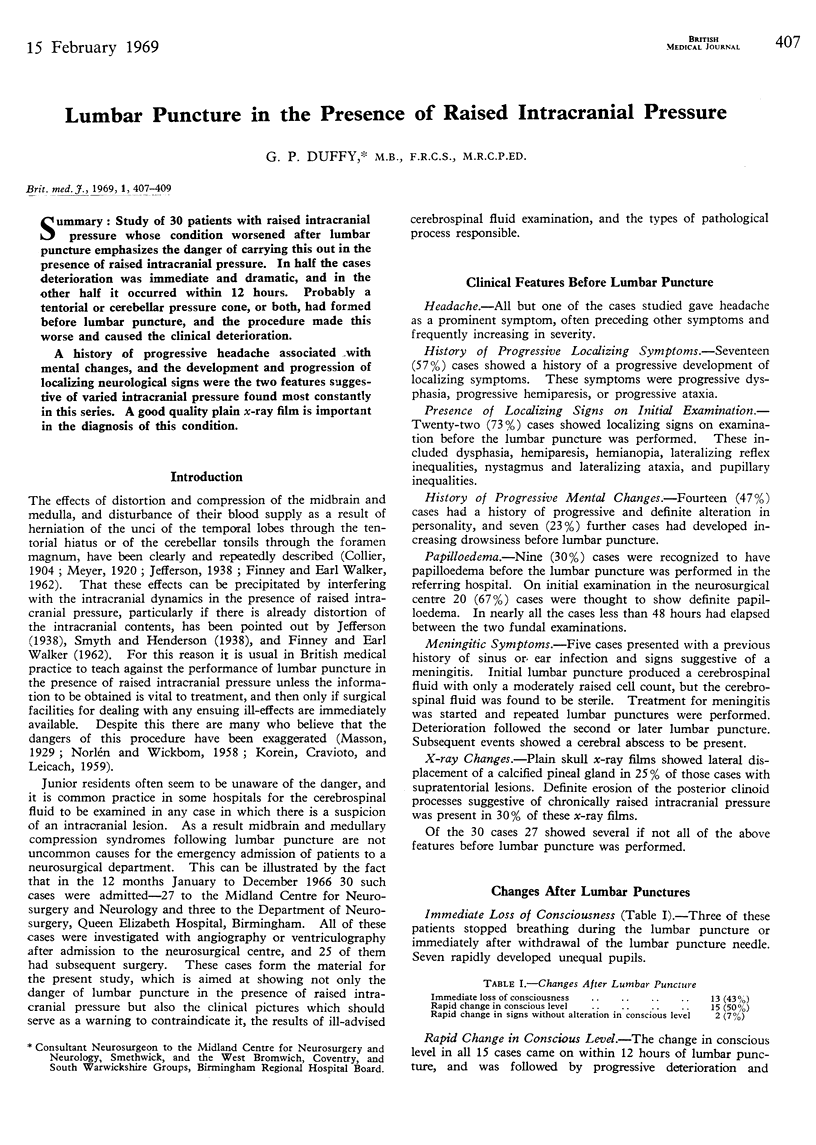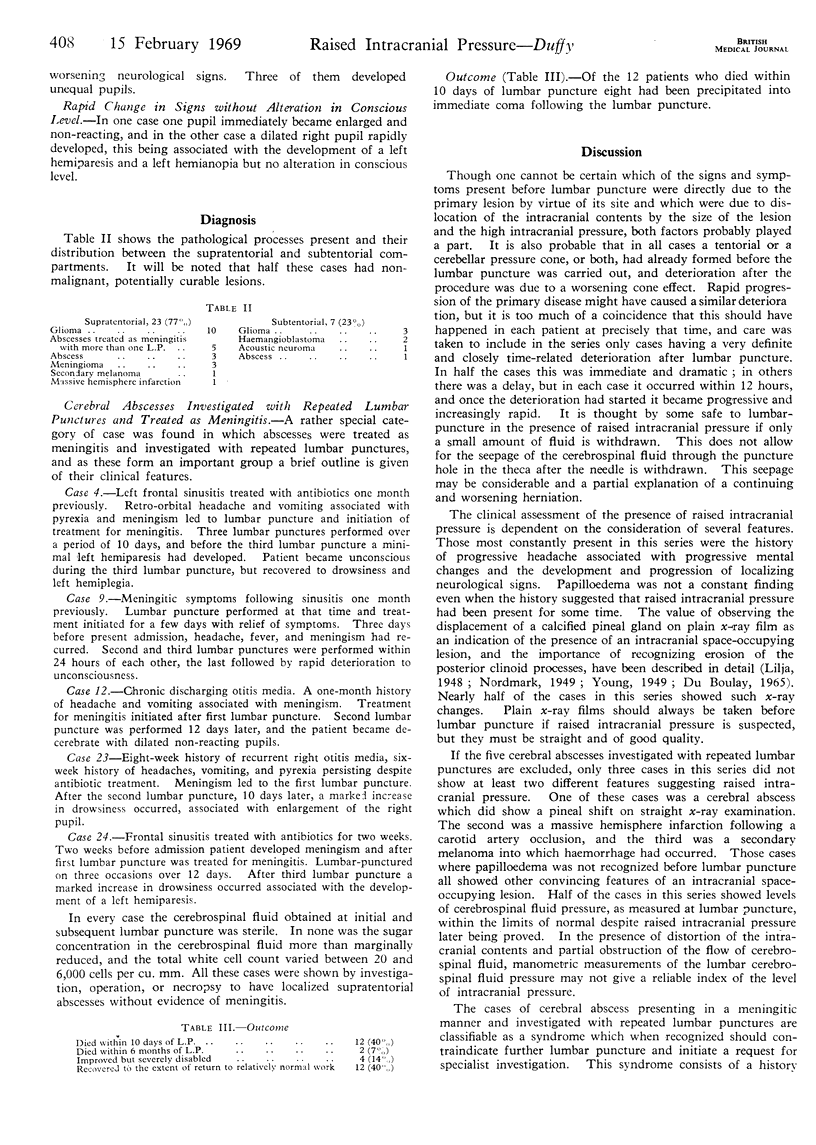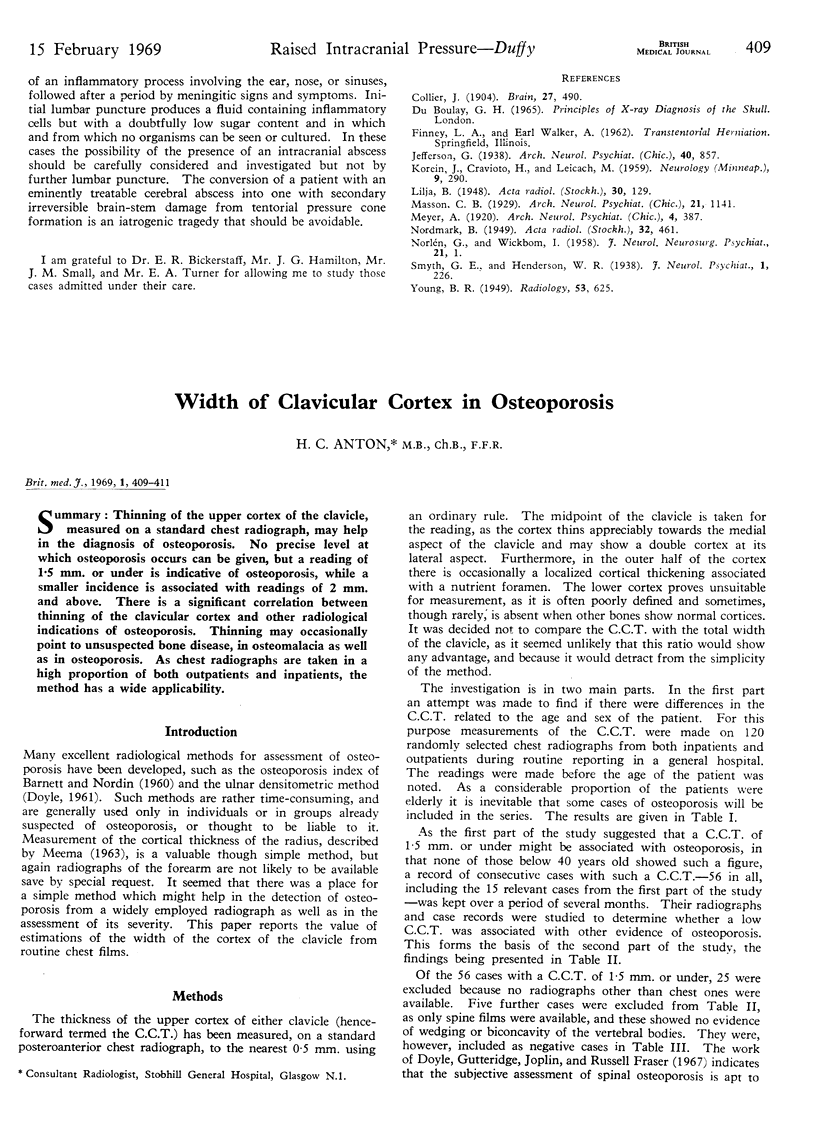Abstract
Study of 30 patients with raised intracranial pressure whose condition worsened after lumbar puncture emphasizes the danger of carrying this out in the presence of raised intracranial pressure. In half the cases deterioration was immediate and dramatic, and in the other half it occurred within 12 hours. Probably a tentorial or cerebellar pressure cone, or both, had formed before lumbar puncture, and the procedure made this worse and caused the clinical deterioration.
A history of progressive headache associated with mental changes, and the development and progression of localizing neurological signs were the two features suggestive of varied intracranial pressure found most constantly in this series. A good quality plain x-ray film is important in the diagnosis of this condition.
Full text
PDF


Selected References
These references are in PubMed. This may not be the complete list of references from this article.
- KOREIN J., CRAVIOTO H., LEICACH M. Reevaluation of lumbar puncture; a study of 129 patients with papilledema or intracranial hypertension. Neurology. 1959 Apr;9(4):290–297. doi: 10.1212/wnl.9.4.290. [DOI] [PubMed] [Google Scholar]
- YOUNG B. R. Roentgen demonstration of displaced intracranial physiologic calcification and its significance in the diagnosis of brain tumors and other space-occupying diseases. Radiology. 1949 Nov;53(5):625-32, illust; Disc 707-10. doi: 10.1148/53.5.625. [DOI] [PubMed] [Google Scholar]


